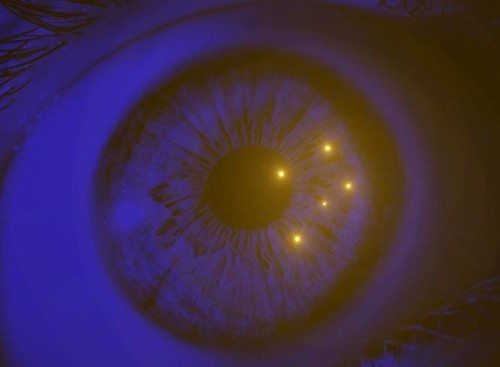Industry News
Quantum Imaging Pilot Aims to Boost Eye Health Access for Remote First Nations Communities
 Australia’s push to harness quantum technology for social impact takes a major step forward as Siloton’s chip-based imaging tech joins forces with a unique Indigenous-led health initiative.
Australia’s push to harness quantum technology for social impact takes a major step forward as Siloton’s chip-based imaging tech joins forces with a unique Indigenous-led health initiative.
UK-based MedTech startup Siloton has sold two of its photonic chip modules and a full chip-OCT (optical coherence tomography) imaging system to Project Ginan, an Australian consortium focused on transforming eye health in remote Indigenous communities.
Led by 100% Indigenous-owned Angel Eyecare, Project Ginan also includes the CSIRO and the Lions Eye Institute. The project aims to evaluate whether Siloton’s quantum-enabled eye imaging platform can offer a viable diagnostic tool for First Nations Australians living in remote regions with limited access to specialist care.
Professor Bill Morgan, Consultant Ophthalmologist at Lions Eye Institute and Royal Perth Hospital said: “This work is extremely important for our capacity to deliver advanced diagnostic imaging to remote communities across rough terrain and in difficult environments, where it is likely that only solid state systems will function for extended periods. Additionally, it is hoped that such systems will be cheap enough to make their way into small communities where they will be cost-effective. We are also very excited about the possibility of using the system in Indonesia and Southeast Asia in particular, where there are many islands and communities, currently under serviced in relation to diagnostic imaging. The success of this research project will be a huge win for Australia and our close neighbours.”
Before hitting the field, the system will undergo environmental testing at CSIRO facilities. Following that, imaging demonstrations will be carried out by clinical experts at the Lions Eye Institute. To that end, Angel Eyecare will run a series of focus groups with First Nations participants to understand how they want their voices included in the creation of this eye care service. These sessions will explore cultural needs, personal comfort, and practical design input for future deployments.
Shane Brookman, Founder of Angel Eyecare said: “Everyone deserves the gift of sight — no matter where they live. This project isn’t just about technology. It’s about giving First Nations people the same access to eye care as anyone else. As a clinician, I’ve seen the heartbreak of preventable blindness in remote communities. With Project Ginan, we’re removing the barriers to care, bringing world-class medical imaging to every corner of Australia.”
The project takes its name from Ginan, a star in the Southern Cross named by the Wardaman people of the Northern Territory. In Aboriginal astronomy, Ginan is seen as a dilly bag filled with songs and knowledge, representing wisdom passed through generations. It’s a fitting metaphor for a program that blends frontier science with age-old cultural reverence for sight and connection to country.
Project Ginan is funded by the Australian Government’s Critical Technologies Challenge Program, under Challenge 2: improving health outcomes and access to technology for First Nations people. The initiative places particular focus on the ethical and community-driven application of quantum innovation. Angel Eyecare has been awarded $499,483 through the Critical Technologies Challenge Program to lead Project Ginan.
Siloton’s technology, which uses photonic chips to deliver high-resolution diagnostic imaging in compact formats, has already captured attention globally—including from the European Space Agency, which is exploring its use in monitoring astronauts' eye health in orbit.
Dr Alasdair Price, CEO of Siloton said: “We’re delighted to be able to support Project Ginan in their mission to bring robust and portable diagnostic eye imaging to underserved First Nations communities across Australia. This initial equipment sale is just the beginning and we look forward to being able to supply the consortium with next-generation devices as their eye scanning service continues to develop.”
As Project Ginan prepares for the next phase of testing and community engagement, the collaboration signals a shift in how Australia is approaching both quantum technology and Indigenous healthcare: not as parallel efforts, but as shared priorities.



